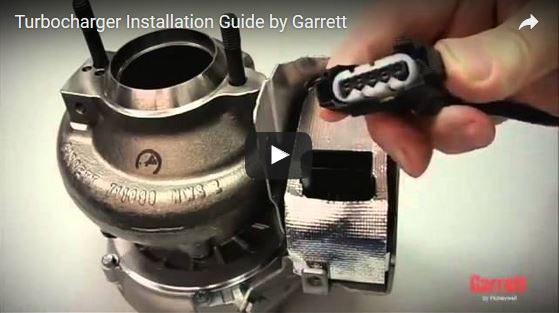
So what was wrong with my Turbocharger?
It’s surprising the information an experienced turbocharger specialist can analyse about a vehicle's engine condition and the manner in which it is maintained and tuned by examining the turbocharger...
Carbonisation:
The most common cause of turbo failure is carbonisation and it is easily diagnosed once a turbocharger is stripped. Most turbocharged vehicle owners would have no doubt heard or read about the importance of regular oil changes and allowing your vehicle to idle for a couple of minutes prior to turning it off.
Contaminated Oil:
Contaminated oil, caused by engine wear or lack of maintenance is also easily diagnosed as it scores or leaves scratch marks on the bearings, bore and shaft in that order due to the hardness of the materials and pending how long the vehicle has been driven with contaminated oil. Carbon and engine wear or damage are the most common causes. The thrust bearing may also suffer severe wear as the small oil gallery feeding the thrust bearing or the even smaller oil galleries in the thrust bearing itself may also become blocked by contaminates.
Air Intake System Contamination:
Dust will leave small nibbling marks on the edge of the compressor wheel blades and is due to either poor maintenance of the air cleaner system, the wrong size air cleaner or a split in a hose or loose intake pipe from the air cleaner assembly to the front of the turbocharger. It is more common in off road vehicles however some owners remove the air cleaner in order to try and gain more power and suffer the same fate. The same dust also enters the combustion chamber and scores the cylinder bores resulting in blow-by or complete engine failure.
Pressure Imbalance:
Thrust wear on the inlet side of the turbocharger generally indicates a problem on the turbine side of the turbocharger, the reverse of what sounds logical Spock. If a muffler has collapsed, exhaust pipe damaged, too small an exhaust system or incorrect sized turbocharger, will result in back pressure in the turbine housing. Naturally one would think this pressure would "push" the turbine wheel forward and consequently wear the turbine side of the thrust bearing which is not the case. Try to imagine pressure as water and the exhaust wheel blades are the propeller on a boat in reverse. Due to its design when it spins in this pressure, (water), it will pull itself backwards towards the rear of the turbocharger hence wear the front or inlet side of the thrust bearing.
Wear on the turbine side of the thrust bearing, is generally due to a problem on the inlet side of the turbocharger but from different causes. If there is a restriction on the pressure side (outlet) of the compressor housing, like the turbine wheel described above, it will try to pull itself forward as if in water, however if the restriction is on the non-pressure side of the compressor cover such as a totally blocked air filter, the turbocharger will create a vacuum or over-speed and the pressure on the exhaust side of the turbocharger will drag the wheels backwards, again wearing the inlet side of the thrust bearing as described in the first paragraph.
As a rule of thumb, inlet manifold pressure, (boost) should equal exhaust manifold pressure or thereabouts. On many occasions I have measured vehicles with 15 lbs of boost running over 50 lbs of exhaust manifold pressure and doomed to fail.
Impact Damage:
Impact damage on the inlet side of the turbocharger will be caused by something foreign entering the turbocharger, no matter how small such as dust mentioned above to something larger which will instantly cause a major turbocharger failure. Impact damage to the turbine blades can be even more concerning as it is normally due to a piece of engine, such as piston or exhaust valve colliding with the exhaust wheel tips causing them to bend, chip or break off altogether.
Excessive Heat:
Bluing of the turbine shaft indicates excessive heat however there can be a number of causes including, lack of oil due to carbonisation, lack of oil pressure or flow, poor oil quality, excessive exhaust temperatures due to lean air/fuel mixtures, incorrect engine or ignition timing, wrong sized turbocharger, or damaged exhaust system are amongst the most common.
Nuked Turbo:
Total turbocharger failure where virtually every component has been obliviated may prove difficult if not impossible to diagnose from trying to determine which component failed first and why. This may be the case if a turbo fails under extreme load or worse, is driven whilst damaged creating a chain reaction damaging all components. A turbine wheel at high RPM has more mass than the much heavier flywheel; I have seen large holes in cast iron turbine housings from turbine wheels exploding under load usually from excessive turbine temperatures due to running too lean in race applications.

